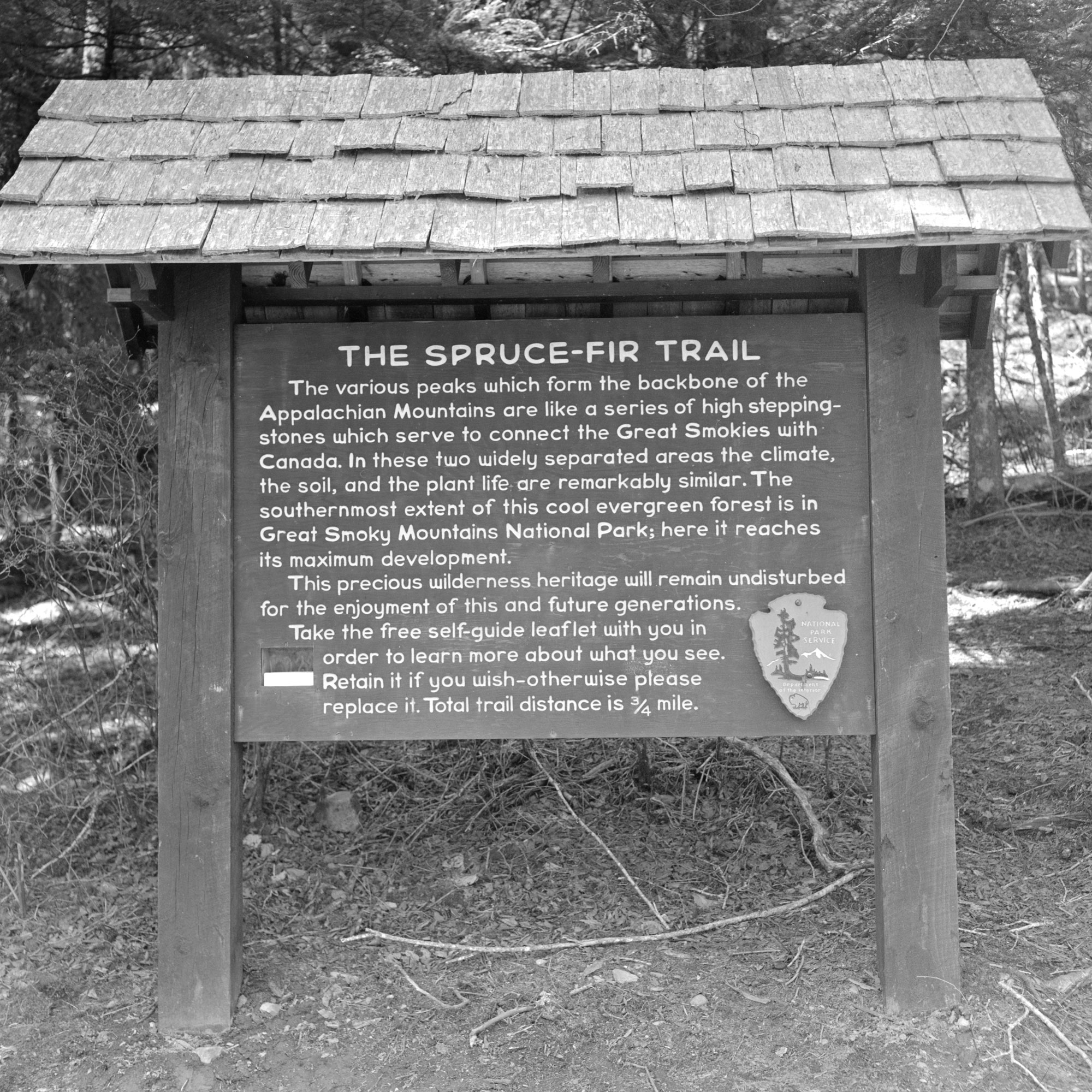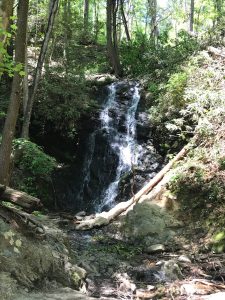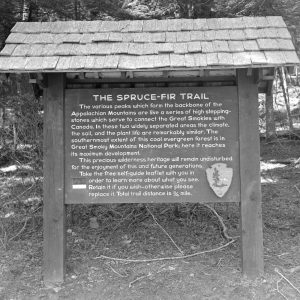
You don’t have to tackle long and arduous hiking trails in the Smokies to get the benefit of a great walk in the woods. Families will be happy to know that the national park offers more than a dozen nature and historic walking trails that are perfect for relatively easy family exploration.
Most of the nature trails—developed by park naturalists—are short loop trails ranging from four-tenths of a mile to a mile long. Although these trails are fairly easy, they tend to be a bit rooty and rocky in spots. Given this, they’re not stroller material, except for the one paved option (Sugarlands Valley). Some also are a bit hilly, but you’ll see plenty of half-log benches sprinkled about if a brief rest is required.
Below, you’ll find quick descriptions of four of these trails, including Sugarlands Valley. Stay tuned for my next two blogs in this series, which will describe more of these trails, as well as the three historic walking trails offered in the park.

1. Fighting Creek—Round trip: 1 mile
This nature trail starts behind the Sugarlands Visitor Center and features a farm site long grown over and reclaimed by the forest. This was once a small community named Forks of the River, with 25 farms and a church, school, store, post office, gristmill for grain, and sawmill for lumber. The trail starts in what was once a cornfield.
The short wooden bridge over an area of low water at the beginning of the trail is an excellent place for spotting salamanders. Where the trail first forks, you’ll go left to continue the nature trail. The trail to the right goes to Cataract Falls, a round trip of seven-tenths of a mile.
Along the way, you’ll come across the ruins of a stone chimney and a rehabilitated single-story, one-room log cabin once belonging to John Ownby.
The trailhead for the Gatlinburg Trail begins near this point, as well. This trail is two miles one way, or four miles as a round trip.
Fun Factivity: Mountain folks prized their sourwood honey, which generally tastes sweeter than clover honey. Before you go on the Fighting Creek Nature Trail, purchase a jar of sourwood honey from any visitor center gift shop. Bring it on the walk, along with a few pieces of bread, simple crackers, or even apple slices to drizzle it on. When you come across a sourwood tree, stop and enjoy your snack. While you do, you can tell your kids that the springtime blossoms from a tree like that one are where the bees who made your honey got their nectar. (Don’t forget to bring wet wipes—you’ll need them!)
2. Sugarlands Valley—Round trip: 0.5 miles
Just half a mile down Newfound Gap Road from the Sugarlands Visitor Center, this wide, paved, and level nature trail winds like a sidewalk through the forest. It’s perfect for both strollers and wheelchairs. The delightful trail leads through what was once a community before the national park was created. You will pass a few stone chimneys (one from a permanent residence, and two from summer vacation cottages), as well as what remains of an old stone wall.
Have your kids look for the black bear paw prints in the pavement of the trail. They were made by a real bear who ambled across the freshly poured concrete when the trail was constructed, leaving a little accidental graffiti. The spot is almost halfway around the loop trail, right at the base of an informational display.
3. Cove Hardwood—Round trip: 0.75 miles
Here’s a nature trail that’s absolutely stellar in spring, peaking with wildflower blooms around the end of April. However, the primeval forest it takes you through is worth seeing any time of year. The trailhead starts at the Chimneys Picnic Area on Newfound Gap Road, 4.6 miles from Sugarlands Visitor Center. Note that parts of this trail are rather steep.
The Smokies have an unusually large number of tree varieties—more than 130 species in all, including some trees you typically don’t see this far south. Although the trees you pass at the start of the trail are second growth, many farther down the trail are so tall (more than 100 feet) that you’d probably need binoculars to see the leaves well enough to identify them. Some trees in this section are more than 150 years old. Be sure to examine the bark of the trees for scratch marks from bears.

4. Spruce-Fir—Round trip: 0.4 miles
Think of this as the park’s one air-conditioned nature trail. The temperatures here are always a good deal cooler than they are at the lower elevations in the park, which makes this trail a nice change of pace in the summer.
In winter, though, it’s a bit trickier to enjoy it—not only because of the colder temperatures, but mainly because the trailhead is located on Clingmans Dome Road, which is closed in the winter. To see this trail then, you’d have to hike to the trailhead from the Newfound Gap parking lot, which is about 2.7 miles down the road, making for about a 5.8-mile hike, round trip.
For much of this trail (the shortest nature trail of the bunch), you’ll be walking on a narrow boardwalk through a mossy green wonderland. You’ll immediately see the challenge this forest is having, though. What were once mighty Fraser firs now stand as naked gray skeletons, killed by a lowly insect called the balsam wooly adelgid. You’ll also see felled spruce trees, toppled by high winds because their root systems are so shallow.
The trees that appear to be on stilts are quite striking. As saplings, they began growing on nutrient-rich dead and decaying logs, putting out roots around the logs into the soil. As they grew and the “nurse logs” completely decomposed, the younger trees were left with a sort of tented-root effect. You can find this effect in a few other areas in the park, too.
Subscribe to get the latest posts sent to your email.
The Great Smokies Welcome Center is located on U.S. 321 in Townsend, TN, 2 miles from the west entrance to Great Smoky Mountains National Park. Visitors can get information about things to see and do in and around the national park and shop from a wide selection of books, gifts, and other Smokies merchandise. Daily, weekly, and annual parking tags for the national park are also available.